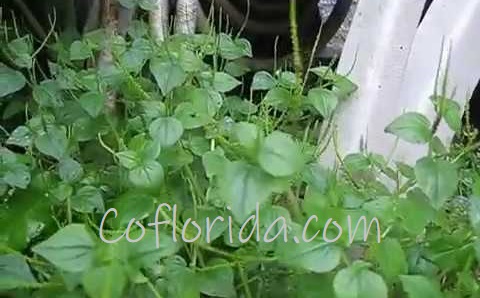Hello everybody!
Today, I show you these nature vegetables which you might have never seen them before. I know, back then, in Vietnam, they’re one of nature vegetable varieties but I’m not sure in the US. In Southwestern Vietnam, no one grows them, they’re just there and regrow themself; people pick and prepare them as a part of an everyday meal (fresh vegetable side dish or vegetable dish).
We got them from a pot of a fruit tree which we bought from a garden center store. At the beginning, there was just only one and then my dad stuck it in the corner of the fence, and, after many years, we got that many.
Nature Vegetable: Clearweed | Peperomia Pellucida | Pepper Elder | Shining Bush Plant | Rau Cang Cua at Garden Q
They are usually died out in the winter and regrow in the summer when the rain season starts.
It’s great when you make them as salads and combine with stir-fried beefs. We call this cuisine as Càng Cua Bóp Dắm Thịt Bò which means preparing them with mixed fresh lime juice or vinegar/sugar/fish sauce and adding stir-fried beefs on the top. It’s very tasty if you eat with homemade mixed fish sauce. For a temporary, I name this cuisine as “Càng Cua” with Stir-Fried Beef Salad.
According to Wikipedia, it is peperomia pellucida and is also known as pepper elder, shining bush plant, and man to man, silverbush, rat-ear, man-to-man… and is named differently at different location on the world.
- North America: clearweed
- Puerto Rico: prenetaria
- Suriname: konsaka wiwiri
- Brazil: coraçãozinho or “little heart”
- Cuba: orazón de hombre
- Vietnam: càng cua
- Thailand: pak krasang ผักกระสัง
- Cambodia: “krasang teap” ក្រសាំងទាប
- Japan: suna kosho
- Bahasa/Malay: rangu-rangu, ketumpangan or tumpang angin
- Nigeria: rinrin
- Trinidad and Tobago: “shining bush”
- Malayalam: mashithanduമഷിത്തണ്ട്, vellipachila and vella-paccha
- In Oceania, rtertiil (Belauan), podpod-lahe or potpopot (Chamorro)
- Philippines: pansit-pansitan or ulasimang-bato (Tagalog), olasiman ihalas (Bisaya), sinaw-sinaw or tangon-tangon (Bikol), lin-linnaaw (Ilocano) and “clavo-clavo” (Chavacano).
- South America: lingua de sapo, herva-de-vidro, herva-de-jaboti or herva-de-jabuti
(Updated by the end of 2021) We got none of them for this year. I don’t know why. They were disappeared.
(Updated by the end of 2022) As of today, I don’t see any of them surrounding the property. Is it gone forever? I don’t know yet.
Written by VN for Garden Q.
Orlando, Florida U.S.A.
April 25, 2017 3:49 PM
Source:
- https://en.wikipedia.org/wiki/Peperomia_pellucida
